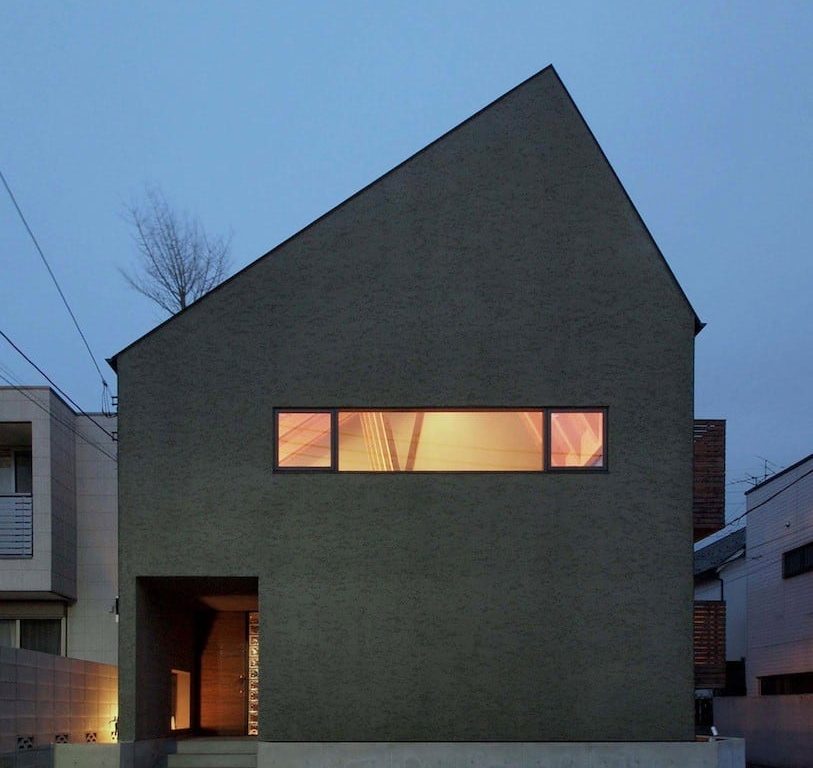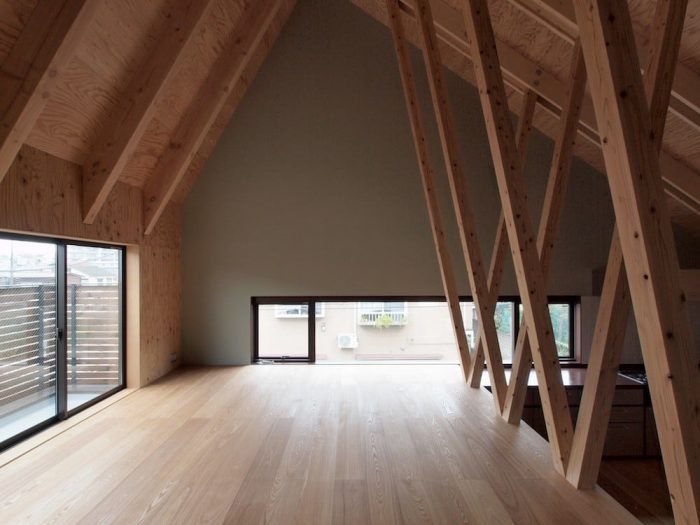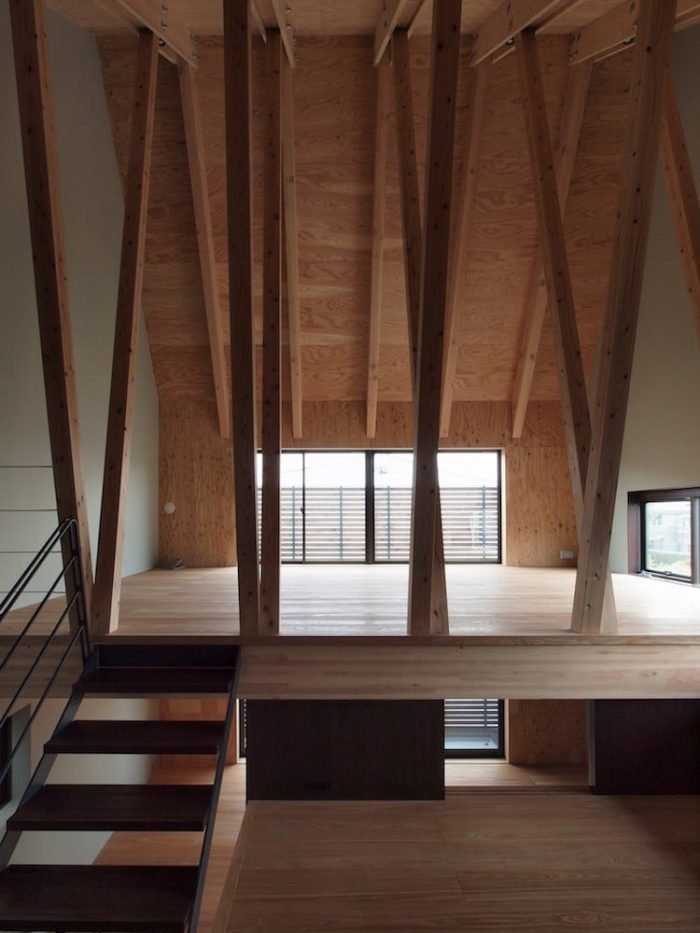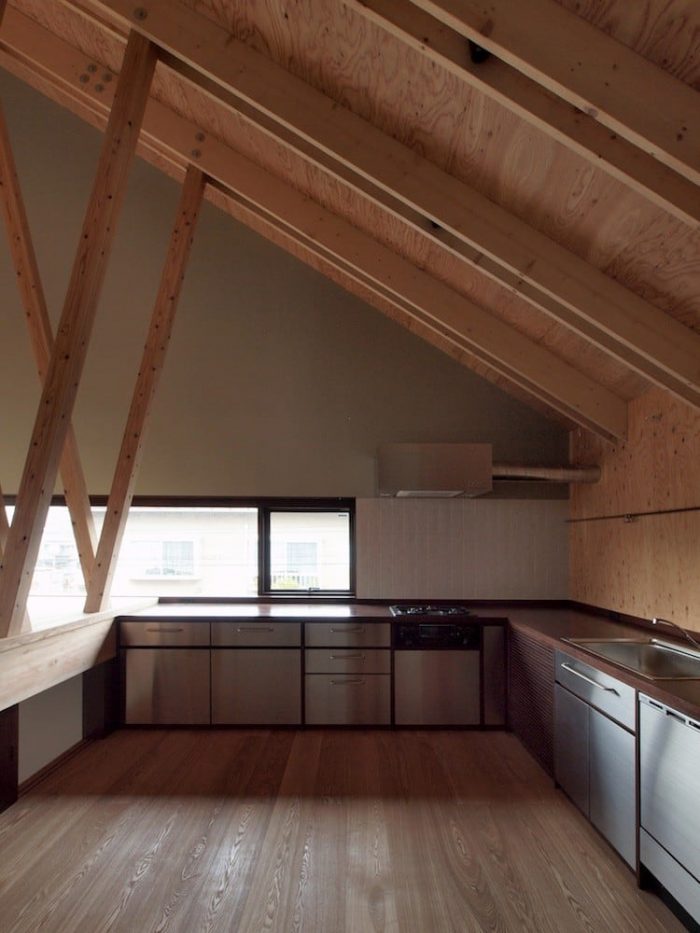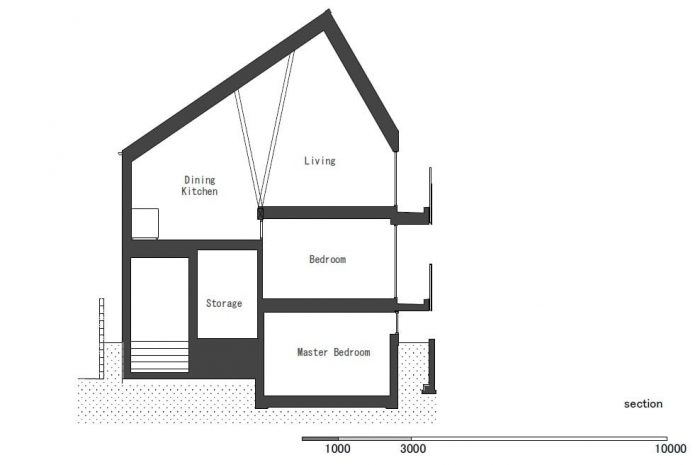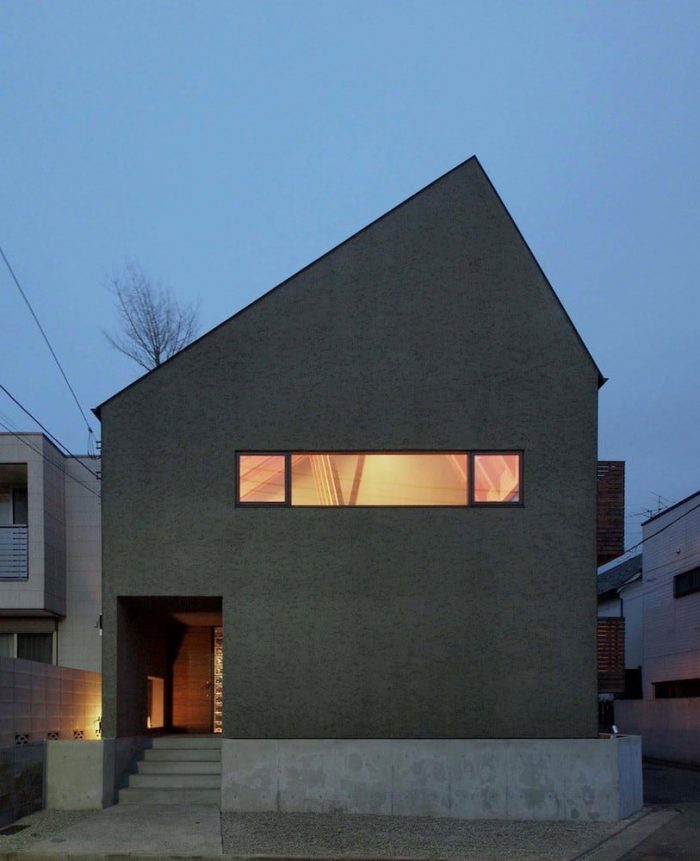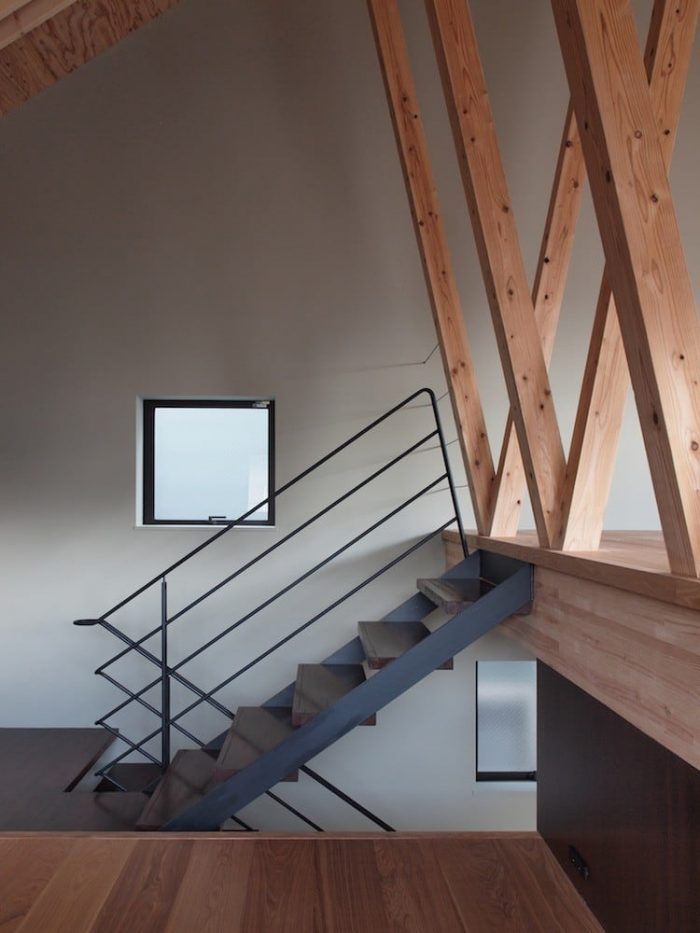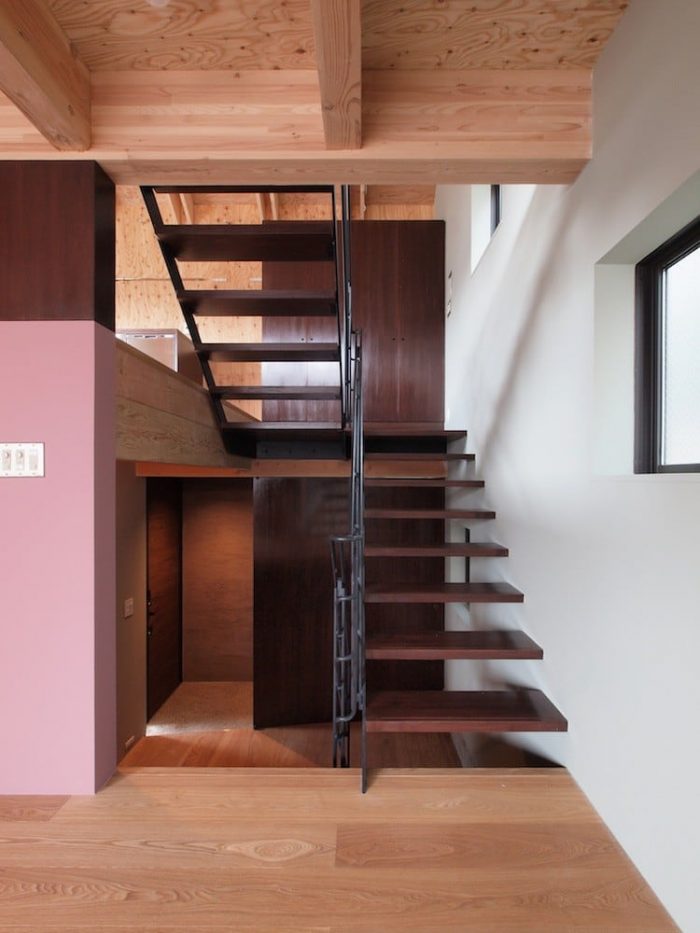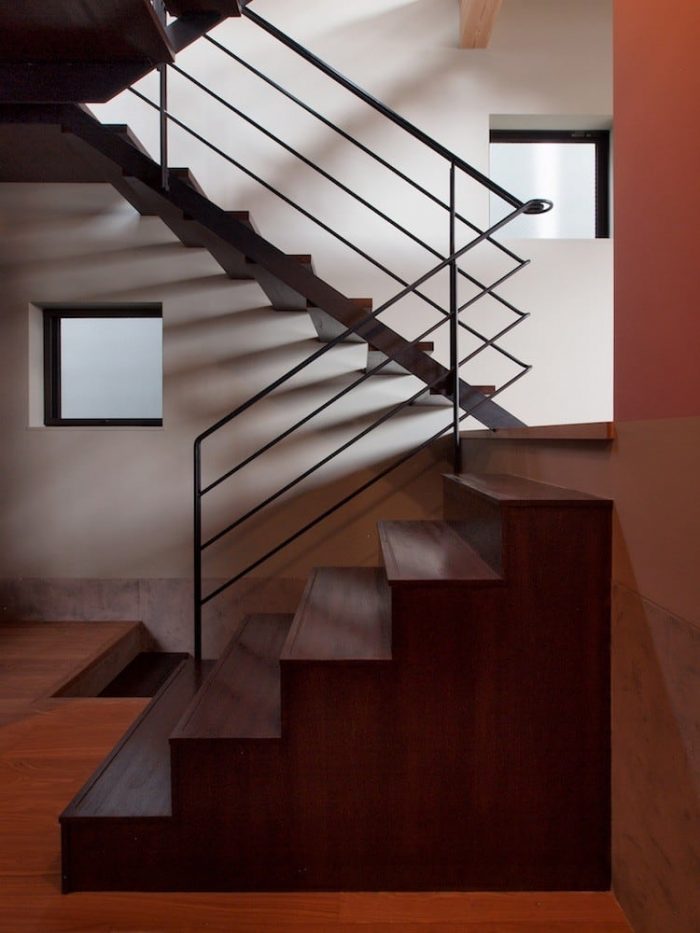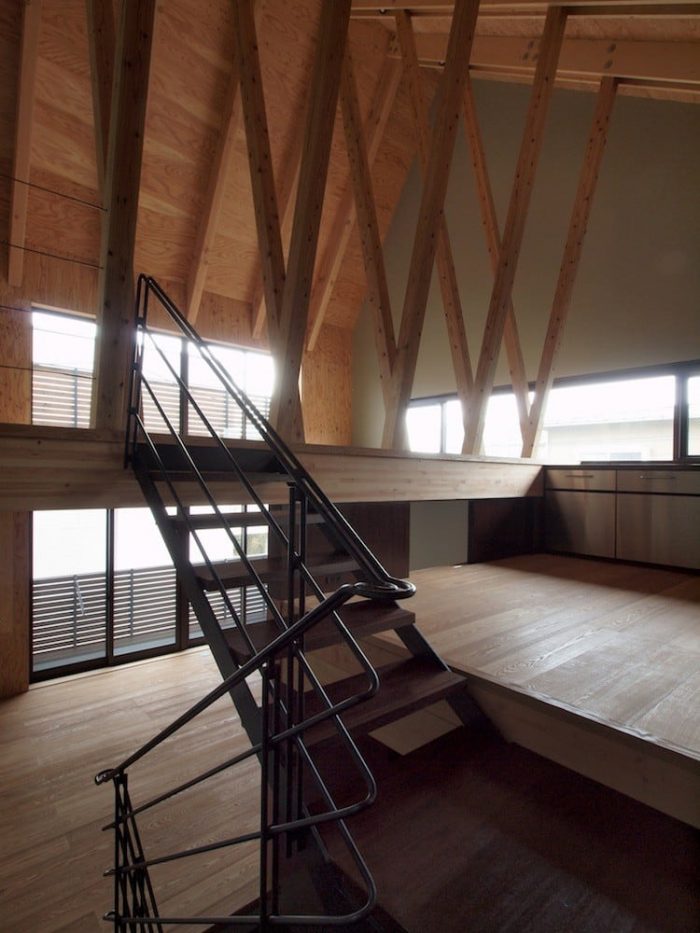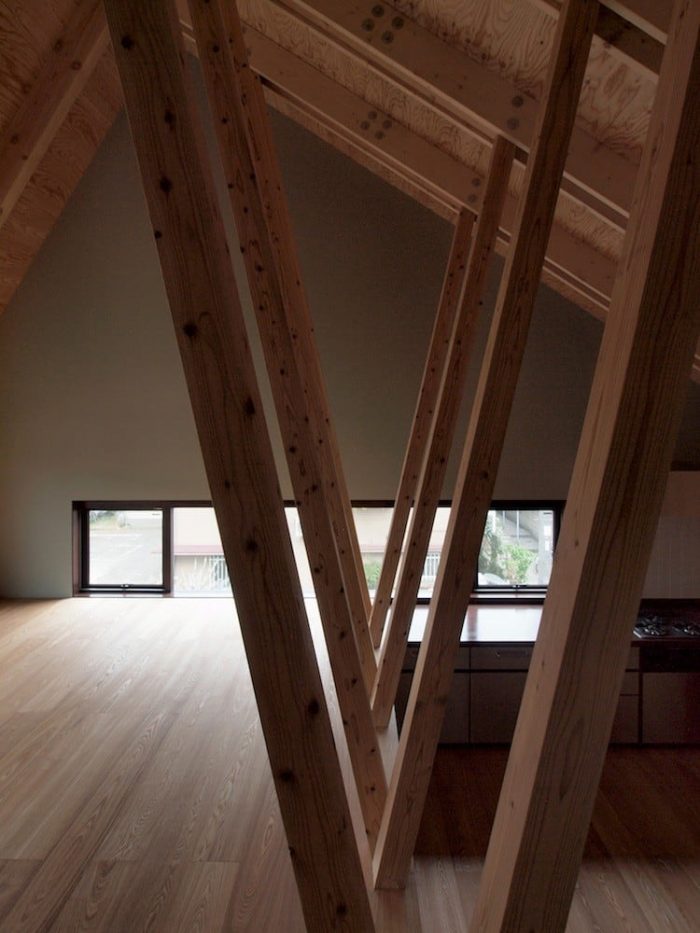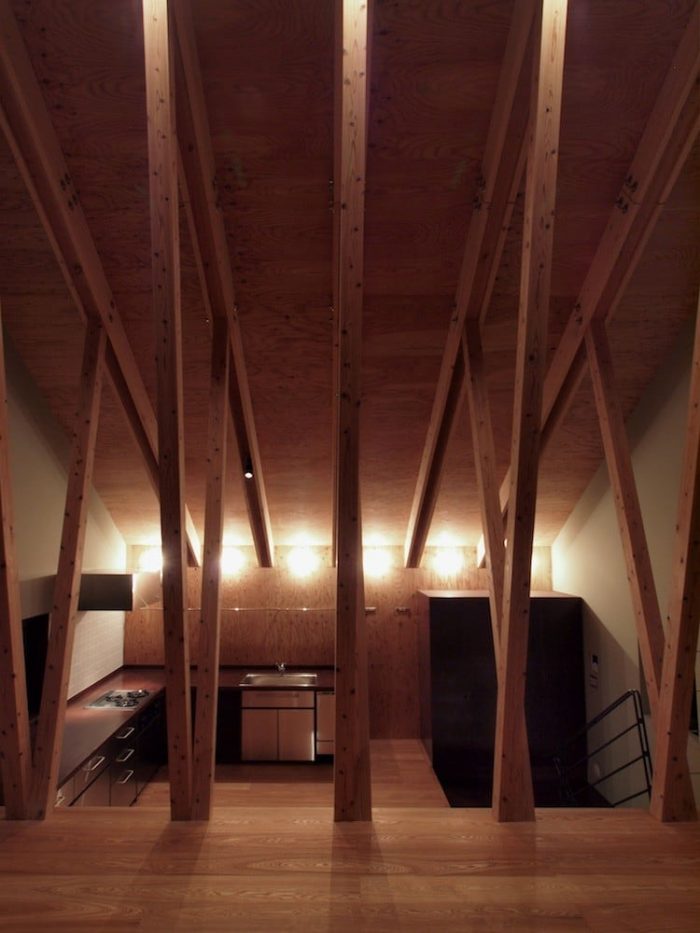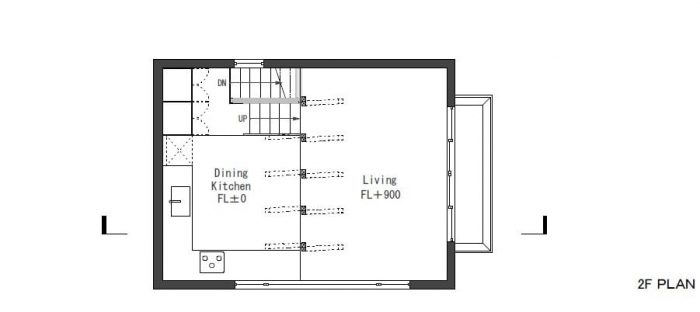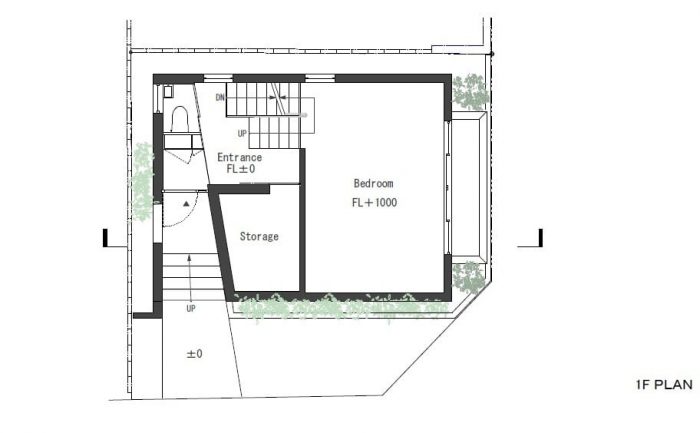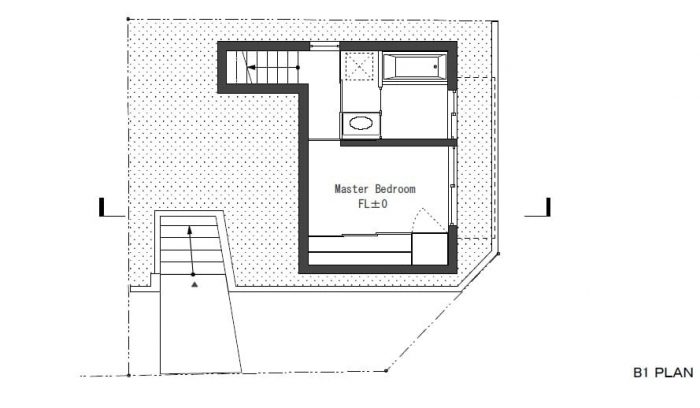日本拥有丰富的森林资源和世界一流的木材建筑技术。同时,该国地震频发,有非常严格的抗震结构规定。与混凝土或钢架结构相比,木材结构需要更多的墙体,并有其他限制,如它不能轻易地跨越很长的距离。然而,传统的日本建筑已经证明,木材结构的这些限制–如果作为一种优势并得到适当的应用–可以提高建筑的空间质量。
Japan has abundant forest resources and world’s first class timber construction technology. The country is, at the same time, struck by frequent earthquakes and has very strict structural regulations against the seismic force. Compared to concrete or steel frame structure, timber structure requires more walls and has other limitations such that it cannot readily span a long distance. Traditional Japanese architecture has proven, however, that these limitations of timber structure can – when used as an advantage and properly applied – enhance the architectural spatial quality.
这座位于东京郊区一个安静的住宅区的住宅,比街道水平线高出1米。为了满足客户对紧凑场地上最大建筑体量的要求,房子建到了北侧法规允许的最高点(该法规限制了建筑高度,以避免对邻近的房屋产生阴影)。它有一个坡屋顶的形式,这样它就不会压倒街上的路人。错落有致的楼层来自于半地下室–为简化容积率而设立–以及利用现有地面的方法。顶层是一个宽敞的连续空间,由倾斜的屋顶和阶梯式地板组成。
This residence in a quiet residential neighborhood of Tokyo’s suburb is elevated 1 m above the street level. In order to meet the client’s request for the maximum building volume on the compact site, the house is built up to the highest point allowed by the north-side regulation (which limits the building height to avoid casting shadow on the neighboring houses). It has a gabled form so that it would not overwhelm the passerby on the street. The staggered floors were derived from the semi-basement – created for the easement of the floor area ratio – and the approach that utilizes the existing ground level. The top floor is a generously-sized continuous space composed of slanted roofs and stepped floors.
它需要一个良好的规划来放置梁和柱,以创造一个大的开放空间。在使用柱子定义空间的同时,也考虑了在大空间中适当放置木柱的问题。横梁–由现成的木材组成–由V形柱子支撑。它们共同创造了一个相对较大的–对于木材结构来说–开放空间,同时满足预算。复合梁和V形柱定义了房间里的空间。
It requires a good planning to place beams and columns in order to create a large open space. The appropriate placement of timber columns in a large space was also considered while using the columns to define the space. The beams – composed of readily available lumber – are supported by V-shaped columns. Together, they create a relatively large – for timber structure – open space while meeting the budget. The composite beams and V-shaped columns define spaces in the room.
Architects: MDS
Area : 94 m²
Year : 2011
Photographs :Kiyotoshi Mori & Natsuko Kawamura
City:SETAGAYA
Country:Japan

